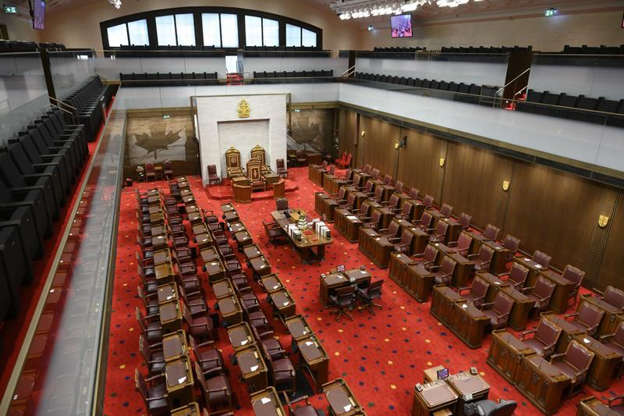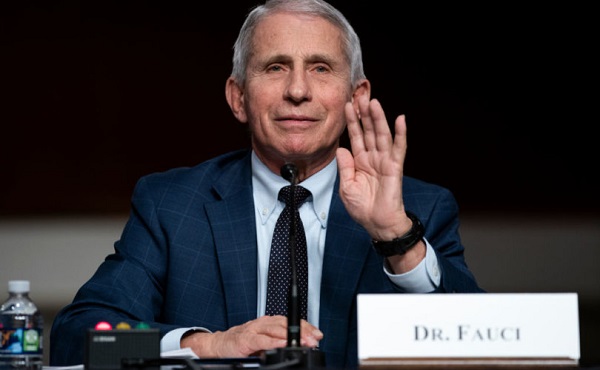Economy
Credits where credit is due: LNG exports and carbon credits
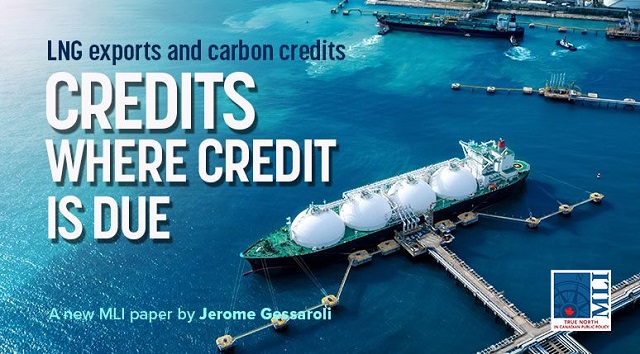
From the MacDonald Laurier Institute
By Jerome Gessaroli
Canada should announce its intent to use Article 6 as a tool to help meet its emissions reduction targets
In this new paper, LNG exports and carbon credits: Credits where credit is due, MLI Senior Fellow Jerome Gessaroli makes the case that Canada can earn ITMOs ( Internationally Transferable Mitigation Outcomes) based on exports of British Columbia-sourced Liquified Natural Gas (LNG). With the potential to significantly lower global carbon emissions and displace coal power in the Asia-Pacific region, such a strategic move by Canada to harness BC’s LNG offers a transformative solution.
Executive Summary
Under the basic current climate accounting rules to which Canada and all other UNFCCC parties have agreed, countries are responsible for reducing GHG emissions within their own national borders. If a country supported a project in another country, it would receive zero credit, no matter what help it may have provided. Therefore, countries have a big incentive to fund projects only within their own borders to help meet their own national carbon reduction goals. That is unfortunate for the planet’s emission reduction efforts. The focus on emission targets within national borders is a shortfall in the nationally based climate accounting system.
To address this shortcoming, the UNFCCC has adopted a framework covered in Article 6 of the Paris Agreement enabling countries to cooperate and share emission reductions. This framework allows carbon credits (known as internationally transferable mitigation outcomes, or ITMOs) to be transferred from the country where the reductions occurred to the country that helped undertake the emissions reduction project.
Sharing emissions reductions through Article 6 is possible when liquefied natural gas (LNG) replaces coal in power generation. This substitution is especially important because coal-fired power plants are expected to produce large amounts of the world’s energy (and GHGs) over the next several decades, even though coal emits much more carbon than other primary fuel sources. Even more troublesome is that new coal plants are still being built in significant numbers. Those new plants alone are expected to emit over 1,415 Mt CO2e (mega tonnes of CO2 equivalent) per year, which dwarfs Canada’s national targeted reductions of approximately 310 Mt CO2e per year by 2030.
Canada, meanwhile, is preparing to become a supplier of LNG. New LNG projects within British Columbia are amongst the least carbon-intensive sources of LNG in the world. BC’s LNG exports could lower global carbon emissions by displacing coal power, particularly in the Asia-Pacific region. Developing markets in Asia would welcome rapidly rising LNG imports. Realistically, BC LNG should be fully used as a substitute fuel to mitigate the carbon emissions impact of existing coal-based power plants, especially those currently used for heating.
While the concept of Article 6, where carbon credits are shared for collaboratively developed projects, is straightforward, the criteria and rules for implementing it are complex. This paper makes the case for how Canada can earn ITMOs based on exports of British Columbia-sourced LNG. An important criterion for making projects ITMO eligible is that the project would not have gone ahead without carbon credits being available. This suggests deals should be structured involving LNG exports along with some other value-added Canadian participation that assists a developing country in switching from coal to LNG as a fuel source. The ITMOs Canada receives could offset any incremental costs we would incur.
If Article 6 is used, the assertion that British Columbia’s pursuit of LNG production would prevent the province from meeting its emission reduction becomes inaccurate. Just over half of LNG Canada’s Phase 1 production capacity in British Columbia would result in approximately 1.2 Mt CO2e emissions annually. Using the same production capacity to replace coal for power generation in Asia has the potential to significantly reduce emissions, ranging from 14.9 to 35.2 Mt CO2e per year. Such outcomes underscore the importance of international collaborative efforts.
Canada should announce its intent to use Article 6 as a tool to help meet its emissions reduction targets. The federal government should then work with industry to identify candidates for bilateral agreements. Common methodologies for measuring, tracking, and verifying carbon mitigation outcomes would all need to be developed as would a registry for tracking and transferring ITMOs. These are complex issues, but we can learn from other countries that have already established processes for managing such projects.
Jerome Gessaroli is a senior fellow with the Macdonald-Laurier Institute and is the project lead for the British Columbia Institute of Technology’s Sound Economic Policy Project. He writes on economic and environmental matters, from a market-based principles perspective.
Bjorn Lomborg
Net zero’s cost-benefit ratio is crazy high

From the Fraser Institute
The best academic estimates show that over the century, policies to achieve net zero would cost every person on Earth the equivalent of more than CAD $4,000 every year. Of course, most people in poor countries cannot afford anywhere near this. If the cost falls solely on the rich world, the price-tag adds up to almost $30,000 (CAD) per person, per year, over the century.
Canada has made a legal commitment to achieve “net zero” carbon emissions by 2050. Back in 2015, then-Prime Minister Trudeau promised that climate action will “create jobs and economic growth” and the federal government insists it will create a “strong economy.” The truth is that the net zero policy generates vast costs and very little benefit—and Canada would be better off changing direction.
Achieving net zero carbon emissions is far more daunting than politicians have ever admitted. Canada is nowhere near on track. Annual Canadian CO₂ emissions have increased 20 per cent since 1990. In the time that Trudeau was prime minister, fossil fuel energy supply actually increased over 11 per cent. Similarly, the share of fossil fuels in Canada’s total energy supply (not just electricity) increased from 75 per cent in 2015 to 77 per cent in 2023.
Over the same period, the switch from coal to gas, and a tiny 0.4 percentage point increase in the energy from solar and wind, has reduced annual CO₂ emissions by less than three per cent. On that trend, getting to zero won’t take 25 years as the Liberal government promised, but more than 160 years. One study shows that the government’s current plan which won’t even reach net-zero will cost Canada a quarter of a million jobs, seven per cent lower GDP and wages on average $8,000 lower.
Globally, achieving net-zero will be even harder. Remember, Canada makes up about 1.5 per cent of global CO₂ emissions, and while Canada is already rich with plenty of energy, the world’s poor want much more energy.
In order to achieve global net-zero by 2050, by 2030 we would already need to achieve the equivalent of removing the combined emissions of China and the United States — every year. This is in the realm of science fiction.
The painful Covid lockdowns of 2020 only reduced global emissions by about six per cent. To achieve net zero, the UN points out that we would need to have doubled those reductions in 2021, tripled them in 2022, quadrupled them in 2023, and so on. This year they would need to be sextupled, and by 2030 increased 11-fold. So far, the world hasn’t even managed to start reducing global carbon emissions, which last year hit a new record.
Data from both the International Energy Agency and the US Energy Information Administration give added cause for skepticism. Both organizations foresee the world getting more energy from renewables: an increase from today’s 16 per cent to between one-quarter to one-third of all primary energy by 2050. But that is far from a transition. On an optimistically linear trend, this means we’re a century or two away from achieving 100 percent renewables.
Politicians like to blithely suggest the shift away from fossil fuels isn’t unprecedented, because in the past we transitioned from wood to coal, from coal to oil, and from oil to gas. The truth is, humanity hasn’t made a real energy transition even once. Coal didn’t replace wood but mostly added to global energy, just like oil and gas have added further additional energy. As in the past, solar and wind are now mostly adding to our global energy output, rather than replacing fossil fuels.
Indeed, it’s worth remembering that even after two centuries, humanity’s transition away from wood is not over. More than two billion mostly poor people still depend on wood for cooking and heating, and it still provides about 5 per cent of global energy.
Like Canada, the world remains fossil fuel-based, as it delivers more than four-fifths of energy. Over the last half century, our dependence has declined only slightly from 87 per cent to 82 per cent, but in absolute terms we have increased our fossil fuel use by more than 150 per cent. On the trajectory since 1971, we will reach zero fossil fuel use some nine centuries from now, and even the fastest period of recent decline from 2014 would see us taking over three centuries.
Global warming will create more problems than benefits, so achieving net-zero would see real benefits. Over the century, the average person would experience benefits worth $700 (CAD) each year.
But net zero policies will be much more expensive. The best academic estimates show that over the century, policies to achieve net zero would cost every person on Earth the equivalent of more than CAD $4,000 every year. Of course, most people in poor countries cannot afford anywhere near this. If the cost falls solely on the rich world, the price-tag adds up to almost $30,000 (CAD) per person, per year, over the century.
Every year over the 21st century, costs would vastly outweigh benefits, and global costs would exceed benefits by over CAD 32 trillion each year.
We would see much higher transport costs, higher electricity costs, higher heating and cooling costs and — as businesses would also have to pay for all this — drastic increases in the price of food and all other necessities. Just one example: net-zero targets would likely increase gas costs some two-to-four times even by 2030, costing consumers up to $US52.6 trillion. All that makes it a policy that just doesn’t make sense—for Canada and for the world.
2025 Federal Election
POLL: Canadians want spending cuts

 By Gage Haubrich
By Gage Haubrich
The Canadian Taxpayers Federation released Leger polling showing Canadians want the federal government to cut spending and shrink the size and cost of the bureaucracy.
“The poll shows most Canadians want the federal government to cut spending,” said Gage Haubrich, CTF Prairie Director. “Canadians know they pay too much tax because the government wastes too much money.”
Between 2019 and 2024, federal government spending increased 26 per cent even after accounting for inflation. Leger asked Canadians what they think should happen to federal government spending in the next five years. Results of the poll show:
- 43 per cent say reduce spending
- 20 per cent say increase spending
- 16 per cent say maintain spending
- 20 per cent don’t know
The federal government added 108,000 bureaucrats and increased the cost of the bureaucracy 73 per cent since 2016. Leger asked Canadians what they think should happen to the size and cost of the federal bureaucracy. Results of the poll show:
- 53 per cent say reduce
- 24 per cent say maintain
- 4 per cent say increase
- 19 per cent don’t know
Liberal Leader Mark Carney promised to “balance the operating budget in three years.” Leger asked Canadians if they believed Carney’s promise to balance the budget. Results of the poll show:
- 58 per cent are skeptical
- 32 per cent are confident
- 10 per cent don’t know
“Any politician that wants to fix the budget and cut taxes will need to shrink the size and cost of Ottawa’s bloated bureaucracy,” Haubrich said. “The polls show Canadians want to put the federal government on a diet and they won’t trust promises about balancing the budget unless politicians present credible plans.”
-

 International2 days ago
International2 days agoPope Francis has died aged 88
-

 International1 day ago
International1 day agoJD Vance was one of the last people to meet Pope Francis
-

 2025 Federal Election21 hours ago
2025 Federal Election21 hours agoOttawa Confirms China interfering with 2025 federal election: Beijing Seeks to Block Joe Tay’s Election
-

 International1 day ago
International1 day agoPope Francis Dies on Day after Easter
-
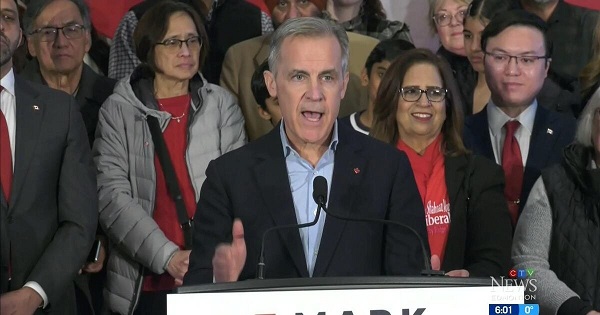
 2025 Federal Election20 hours ago
2025 Federal Election20 hours agoHow Canada’s Mainstream Media Lost the Public Trust
-

 Business2 days ago
Business2 days agoCanada Urgently Needs A Watchdog For Government Waste
-
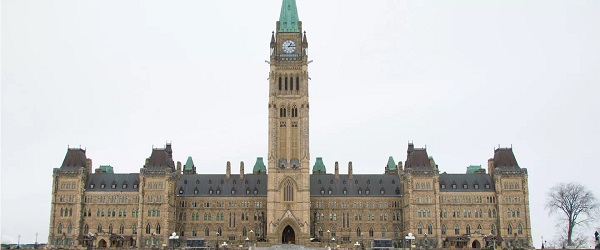
 2025 Federal Election2 days ago
2025 Federal Election2 days agoCarney’s budget means more debt than Trudeau’s
-
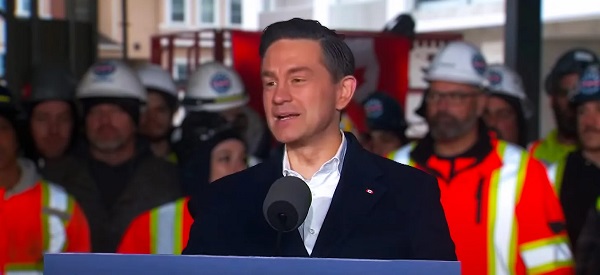
 2025 Federal Election20 hours ago
2025 Federal Election20 hours agoReal Homes vs. Modular Shoeboxes: The Housing Battle Between Poilievre and Carney





